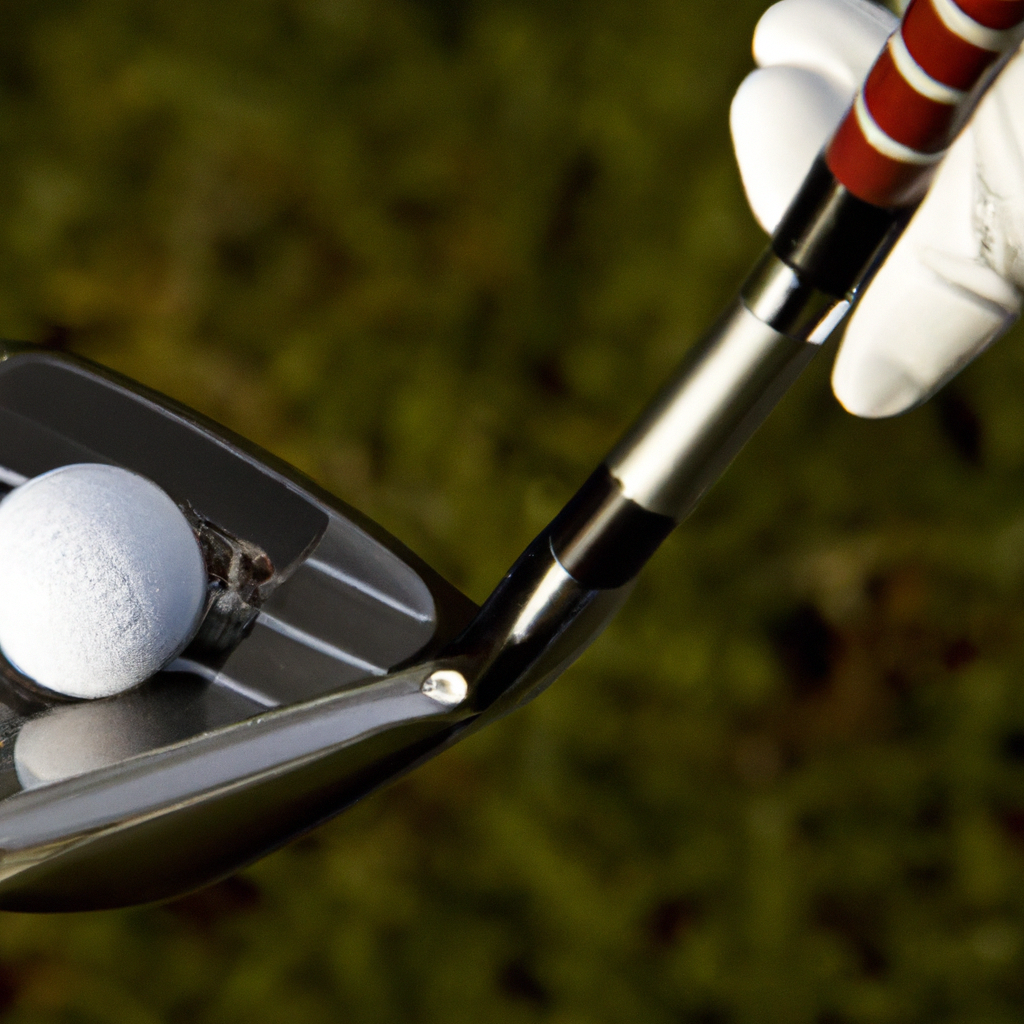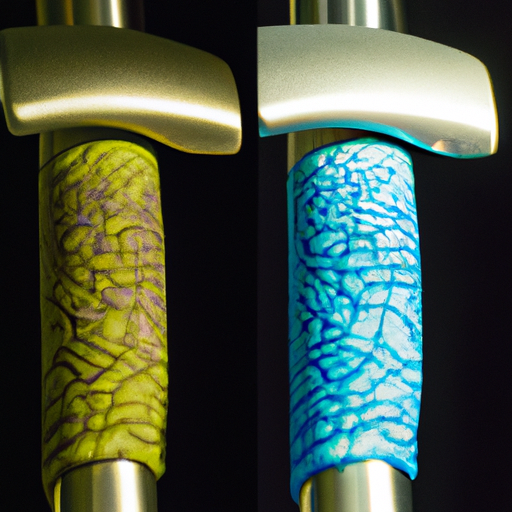Maintaining a proper grip on your golf clubs is essential for a successful swing, and regular regripping plays a vital role in achieving this. In this article, we will explore the importance of regular golf club regripping and provide guidance on how often you should consider regripping your beloved clubs. So, buckle up and get ready to discover the secrets behind keeping your golf game at its peak performance!
The Importance of Regular Golf Club Regripping
When it comes to golf, every little detail matters, and one crucial aspect that often gets overlooked is the condition of your golf club grips. Regularly regripping your golf clubs is an essential practice that should not be taken lightly. Not only does it enhance your grip and control, but it also improves accuracy, extends the lifespan of your clubs, prevents hand injuries, and even boosts your shot distances. In this article, we will delve deeper into the various benefits of regular golf club regripping and why it should be a priority for every golfer.

Enhanced Grip and Control
One of the primary reasons why regular regripping is crucial is that it enhances your grip and control over the club. Over time, golf club grips naturally wear down due to usage, exposure to various elements, and simply the passage of time. As a result, the rubber or leather on the grip becomes smooth, which significantly reduces the traction between your hands and the club. This lack of grip can lead to errant shots, loss of control, and an overall decrease in performance.
By regripping your clubs regularly, you ensure that the grips remain tacky, providing you with a firm and secure hold on the club. This enhanced grip allows you to swing with more confidence, knowing that the club will not slip or twist in your hands. Ultimately, a solid grip translates to better ball control and improved overall performance on the golf course.
Improved Accuracy and Consistency
The condition of your club grips also plays a crucial role in your accuracy and consistency as a golfer. When the grips wear down, it becomes increasingly challenging to maintain a consistent hand position throughout your swing. This inconsistency can lead to wayward shots, inconsistent ball flight patterns, and an overall lack of control over the clubface.
Regular regripping ensures that your grips remain in optimal condition, providing you with a consistent feel and positioning every time you grip the club. This consistency allows you to develop a repeatable swing, resulting in improved accuracy and a more predictable ball flight. Whether you’re lining up for a long drive off the tee or attempting a delicate chip shot around the green, the improved accuracy and consistency from regular regripping will undoubtedly benefit your game.
Extended Club Lifespan
Investing in a good set of golf clubs is not a small financial commitment. Therefore, it is in your best interest to take care of them and extend their lifespan as much as possible. Regularly regripping your clubs is a simple and effective way to achieve this.
As mentioned earlier, when your club grips wear down, their performance and effectiveness diminish significantly. Continuously using worn-out grips not only affects your game but can also lead to further damage to your clubs. For example, using grips with insufficient traction might cause you to grip the club tighter than necessary, resulting in added stress on the shaft and potential breakage.
By regripping your clubs regularly, you ensure that the grips are in optimal condition, reducing the risk of any unnecessary wear and tear on your clubs. This, in turn, can help extend their overall lifespan and ultimately save you money in the long run.
Prevention of Hand Injuries
Golf is a physically demanding sport that requires repetitive gripping and swinging motions. Over time, these motions can lead to hand injuries if the grips on your clubs are worn down. When the grips lose their tackiness, you may find yourself gripping the club tighter than usual, often leading to overuse injuries such as tendonitis or golfer’s elbow.
Regular regripping helps prevent hand injuries by maintaining the optimal grip on the club. By ensuring that the grips are in good condition, you can grip the club with less force, reducing the strain on your hands and wrists. This decreases the risk of developing hand injuries and allows you to enjoy the game without pain or discomfort.

Better Shot Distances
When it comes to maximizing your shot distance, a firm and consistent grip on the club is paramount. Worn-out grips with reduced traction can cause your hands to slip during the swing, leading to an inefficient transfer of power and loss of distance.
By regularly regripping your clubs, you maintain a solid grip, allowing you to generate and transfer maximum power through the swing. This improved grip leads to better shot distances as you can effectively utilize the energy and torque generated by your body. Whether you’re looking to crush your drives off the tee or add a few extra yards to your iron shots, regripping your clubs can help you achieve those coveted longer distances.
Optimized Feel and Feedback
The feedback you receive from your golf club grips is crucial for making precise adjustments and improving your swing. Worn-out grips can dull the sensations felt during impact, making it difficult to gauge the quality of your shots. The lack of feedback can make it challenging to pinpoint areas for improvement and make necessary swing adjustments.
Regular regripping ensures that your grips provide optimal feel and feedback. With fresh and tacky grips, you can better understand the club’s position at impact, the quality of contact with the ball, and even the release of the club through the swing. This heightened sense of feel allows you to make more refined adjustments, improving the overall consistency and quality of your shots.
Reduced Hand Fatigue
The repetitive nature of golf can lead to hand fatigue, particularly if you’re using worn-out grips. Gripping the club too tightly to compensate for the reduced traction can strain the muscles in your hands and lead to fatigue and discomfort during and after your round.
By regripping your clubs regularly, you maintain the tackiness of the grips, enabling you to grip the club with less tension. This relaxed grip reduces the strain on your hand muscles and helps prevent excessive fatigue. As a result, you can maintain a more relaxed and comfortable grip throughout your round, enabling you to focus on your swing and enjoy the game without unnecessary hand fatigue.
Enhanced Confidence
Confidence is a key factor in golf, and the condition of your club grips can significantly impact it. When your grips are worn down, it’s natural to feel less confident in your swing and overall game. The subconscious concern of the club slipping or twisting in your hands can lead to fear and hesitation, resulting in a tentative and subpar performance on the course.
Regular regripping instills confidence in your game. With fresh and tacky grips, you can trust your grip and focus on executing your swing without any doubt or uncertainty. This enhanced confidence translates to a more assertive and aggressive swing, resulting in improved shotmaking and better overall performance.
Adapting to Weather Conditions
Weather conditions can have a significant impact on your golf game, and the condition of your club grips plays a crucial role in your ability to adapt. In wet and humid conditions, worn-out grips become particularly slick, making it challenging to maintain a secure hold on the club. This can lead to inconsistent shots and decreased control.
Regularly regripping your clubs allows you to adapt to changing weather conditions. By ensuring that your grips are in optimal condition, you can handle wet or humid conditions with confidence. Fresh and tacky grips provide better traction, allowing you to maintain control of the club even in adverse weather. This adaptability ensures that you can perform at your best, regardless of the conditions you encounter on the golf course.
Tackling Wear and Tear
Lastly, regular regripping helps tackle general wear and tear that your club grips experience over time. Along with the natural wearing down of the material, grips can also accumulate dirt, oils, and sweat from your hands, further degrading their performance. These factors can lead to decreased tackiness, reduced grip stability, and overall diminished performance.
By regripping your clubs at regular intervals, you can combat the effects of wear and tear. This maintenance practice ensures that you always have grips that are fresh, clean, and performing at their best. It allows you to start each round with grips that give you maximum control and confidence, no matter how many rounds you’ve played before.
How often should you regrip golf clubs?
The frequency at which you should regrip your golf clubs depends on various factors, including how often you play, the conditions you play in, and the type of grips you use. As a general guideline, most avid golfers tend to regrip their clubs every 1-2 years or every 40-60 rounds.
However, it’s important to monitor the condition of your grips and consider regripping sooner if you notice any signs of wear. If the grips are losing their tackiness, visibly worn or smooth, or if you’re experiencing reduced performance or comfort during your rounds, it may be time to regrip your clubs.
In conclusion, regular regripping of your golf clubs is a critical maintenance practice that offers numerous benefits for your game. From enhanced grip and control to improved accuracy and consistency, the advantages of regripping extend beyond pure performance. By regripping your clubs regularly, you can extend the lifespan of your clubs, prevent hand injuries, boost your shot distances, optimize feel and feedback, reduce hand fatigue, increase confidence, adapt to weather conditions, and effectively tackle wear and tear. So, don’t overlook the importance of regripping and make it a priority for your golf equipment maintenance routine.
